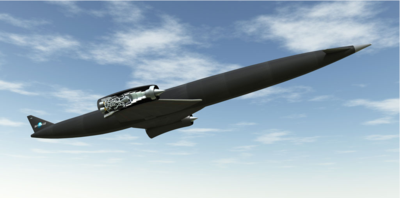
Contact Details:
EngNet - Engineering Network
11121 Carmel Commons Blvd.
Charlotte
NC
28226
United States of America
Tel: +01 704 5413311
Fax: +01 704 9430560
Send Enquiry | Company Information

The Biggest Breakthrough in Propulsion since the Jet Engine
Product News Tuesday, January 29, 2013: EngNet - Engineering Network
Reaction Engines, a privately funded UK company, is developing Skylon , an unpiloted, reusable spaceplane designed to allow runway to earth orbits and return flights, significant reductions in costs versus existing technologies, and a 400% increase in reliability. The vision is for fleets of Skylons owned by nations and companies that want access to space to launch satellites and transport cargo in a manner similar to the current civil aviation aircraft industry but who don't want to go through the time and cost of developing their own independent launch systems.
The most impressive feature of Skylon is its Saber Engines, a breakthrough in aerospace propulsion technology, that can be configured to operate as jets in the atmosphere accelerating up to mock 5.5 and operating in rocket mode beyond the atmosphere with an orbital velocity of Mach 25. Saber Engines use air breathing technologies and rocket cycles for propulsion and allow 1,250 tons of atmospheric air to be captured and used in the engines, of which 250 tons is oxygen, eliminating the need for propellant tanks.
Saber engines use an innovative pre-cooler technology that cools the incoming air stream from over 1000°C to 250°C in less than 1/100th of a second without blocking with frost even at temperatures of minus 150°. The European Space Agency has validated test results of the engine. This is the latest in a line of innovations by Reaction Engines including contra-rotating turbines, and novel combustion chambers, rocket nozzles, and air take components.
Skylon's Delta wings are attached midway along the fuselage where the Saber engines are attached in axissymmetric nacelles on the wingtips. During atmospheric flight yaw, pitch and roll control and maneuvering are handled by tailfins, canards, and ailerons extending along the entire wing trailing edge.
The materials used for Skylon's structure include carbon fiber reinforced plastic consisting of stringers, frames, ribs and spars, aluminum propellant tankage and an external shell made from fiber reinforced ceramic.
Takeoffs and landings are achieved with a conventional retractable undercarriage. Takeoff weight is 275 tons and landing weight is 55 tons. The vehicle will be capable of transporting 15 tons of cargo into space.
Estimates are that Saber powered reusable spaceplane will dramatically cut the cost of launching satellites by more than 10 times. The global space market is worth $300 billion annually. That being said full development of the Skylon is expected to cost about as much as the development of the Airbus or about $20 billion.
